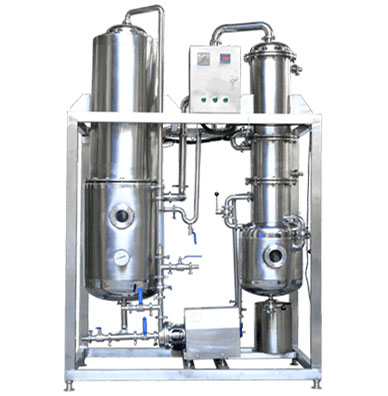Concentrators are used for increasing the concentration of a solution.
The output of a concentrator could be “pure melt” or “supersaturated solution.” While the machine generally uses heat to evaporate the base solvent, it sometimes employs relative vacuum due to limitations of temperature or to reduce energy consumption.
The solid material (the product) is extracted from the feed solution through one of the following methods:
- If the temperature of the solution reaches or surpasses the melting point of the solid during the concentration process, the output will melt down . As an instance, a Caustic Soda concentrator that is fed a 50%-soda solution at ambient temperature delivers molten soda of 98% at a temperature of 320 ° C. The output melt of the concentrator is then fed to a flaker or a granulator to solidify.
- If the temperature of the solution does not reach the melting point of the solid during the concentration process, the output could be saturated or supersaturated solution that can contain solid crystals. The effluent is fed to a hot drum or a centrifuge separator for complete separation of the product from the solvent. The remaining solvent would evaporate in a hot drum and the final product is obtained in the form of flakes or granules, based on the nature of the material.
The following figures illustrate concentrators using methods A and B.
(These equipment were designed and manufactured by Kiatarh Apadana)


